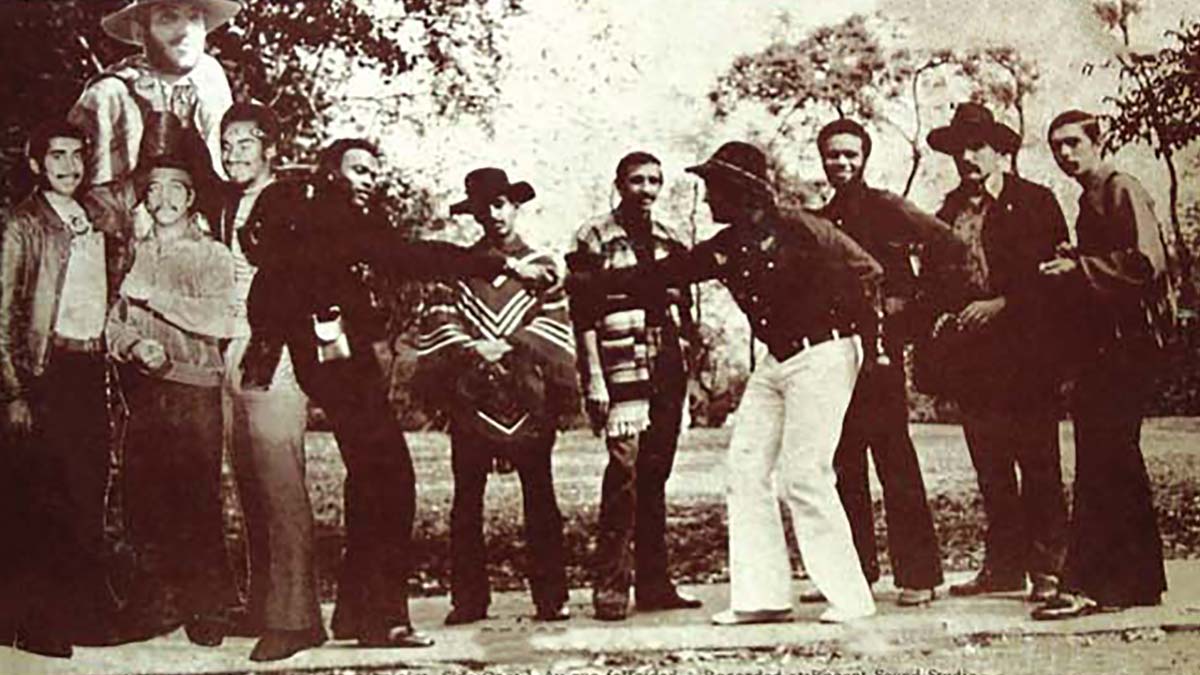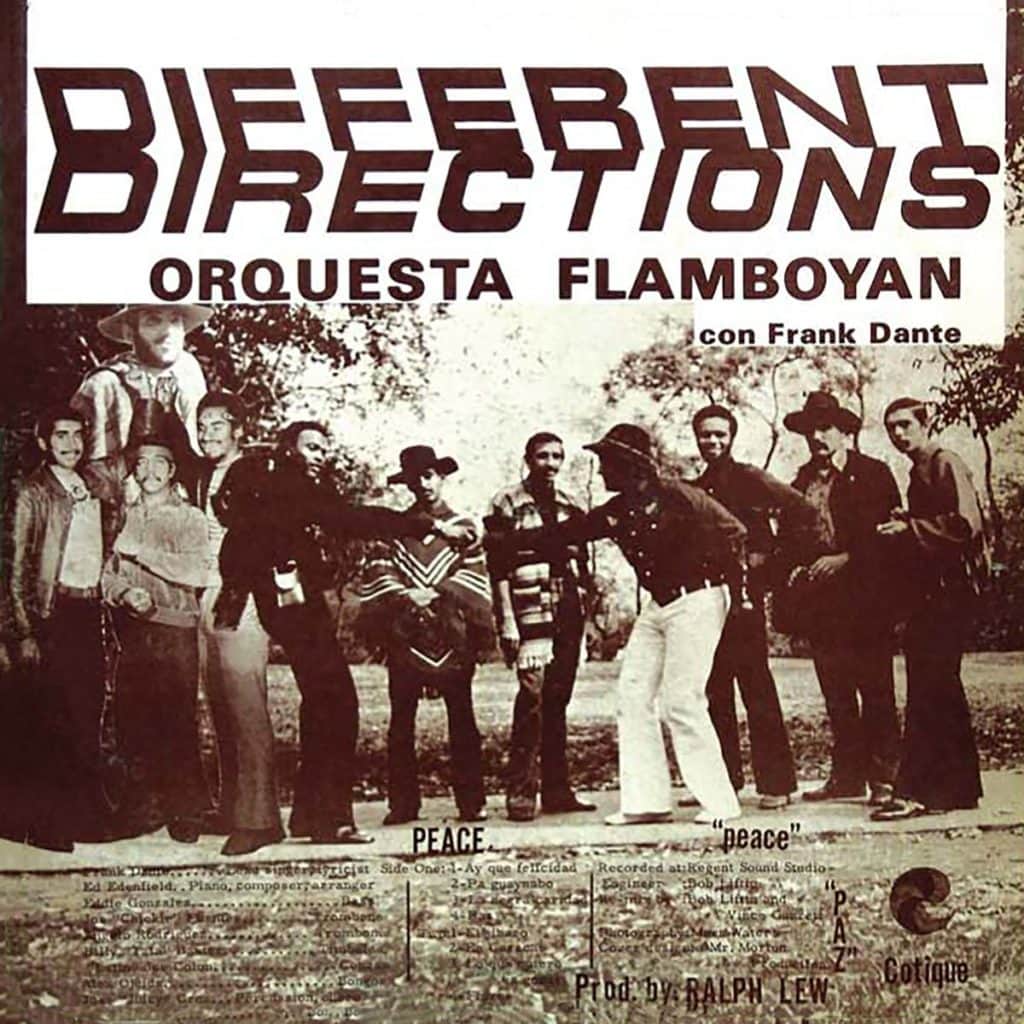
One of the most colorful and talented individuals in the music industry was the inimitable Frankie Dante. His bohemian behavior endeared him to the countless fans that followed his Orchestra Flamboyan whenever they performed. Sadly, Frankie, born in Santo Domingo in 1945, succumbed to cancer on March 1 of 1993. He is still appreciated by underground salsa fans everywhere and will be for many years to come. Fortunately, his exquisite music technique can still be enjoyed in the best dance halls and clubs throughout Latin America.
Frankie began his career in 1968, when he was signed to a recording contract by the Cotique Records producers George Goldner and Stan Lewis. He was immediately accepted throughout the New York nightclub circuit and has played opposite the best of the Latin New York bands all through his illustrious career. Frankie’s approach to his music can be appreciated when listening to any of his compositions; songs that tell a story or deliver an important message to his many followers. This album, “Different Directions” was recorded when Frankie was still honing his skills and features members of his original band. It contains no less than six of Frankie’s original compositions.
Although Frankie possessed a unique approach to his singing style, considering the nasal characteristic of his voice and his ability to create interesting and compelling improvisations, he claimed to be strongly affected by the manner in which salsero Ismael Quintana excites his listeners. Frankie was also a big fan of Fania artist Johnny Pacheco, and was heavily influenced by Eddie Palmieri’s trombone inspired arrangements. Fania legend, Larry Harlow, and recording artist, Markolino Dimond, two of the finest salsa pianists to have ever recorded, were co-artists with Frankie in many of his recordings for Cotique.
This album kicks off with an original Dante composition where the Flamboyan style can be truly appreciated. The son montuno, “Ay Que Felicidad” is laid down in a steady groove that gives the dancers occasion to express themselves. The rhythm section sounds really tight and Frankie’s soneos add to the excitement of this cunning arrangement. The song “Pa’ Guaynabo” describes Frankie’s longing to leave New York for the warmer climate and festivities of Guaynabo, Puerto Rico. Frankie, an avid protester of war, has demonstrated this in many of his compositions. You will notice that in the song “Paz,” Frankie opposes the war in Vietnam and calls for world peace and nonviolent times. The song ends with a bang (a bomb exploding, birds singing, then Frankie sings, a capella, about the black bird flying away without restraint.)
In the song “En Caracas” Frankie comments on the Venezuelan dancers and how they enjoy dancing sabroso (savory) to his music. “Lo Que Quiero Es Gozar” is where Frankie informs us of his desire to have fun (gozar) and enjoy life to the fullest. This particular arrangement is a bit reminiscent to the boogaloo sound of that era, although Frankie was more content performing straight up salsa for his fans. Pianist Ed Edenfield shows off his aptitude in this track. Once again, in the tune “Flores,” Edenfield electrifies the keyboard while the trombonist gets to step out a bit and solo in terrific fashion.
By listening to and enjoying Frankie Dante’s recordings you are sure to be treated to music at its best. The underground salsero shines in this particular album which will surely be embraced by the elite listeners, dancers and aficionados of salsa dura. So treat yourself to a good time. Listen to and enjoy the Orchestra Flamboyan and its electrifying leader and vocalist, Lenin Francisco Domingo Cerda aka Frankie Dante.



